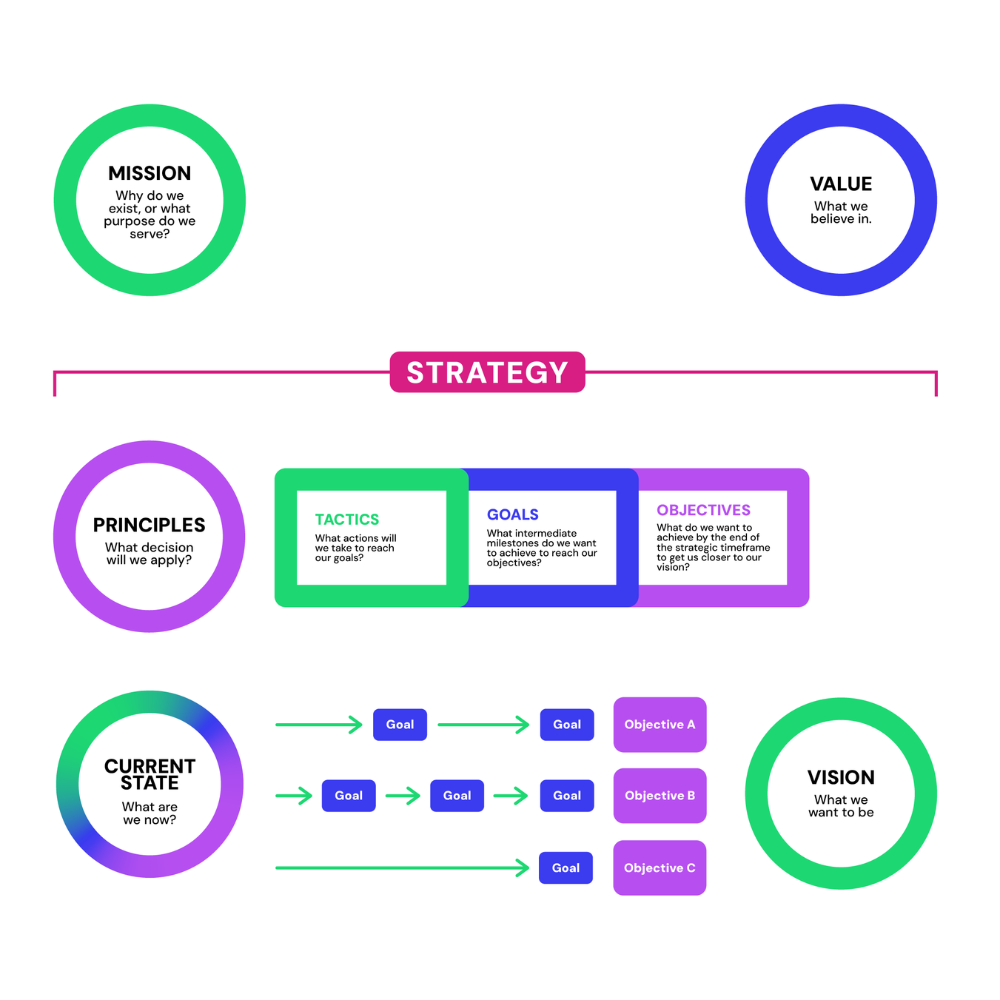As Q4 approaches, it’s easy to get swept up in the end-of-year sales frenzy. But while hitting those immediate targets is essential, it’s just as important to start laying the groundwork for a successful strategy for the year ahead. Experts like Roger L. Martin and Alex M. H. Smith emphasize that even during these busy periods, a forward-thinking approach is crucial for long-term success.
Here’s a straightforward checklist to help you craft a strong strategy for the coming year, so you’re not just reacting to the present, but proactively shaping the near future.
1. Start with Zero-Based Budgeting - CRAZY, RIGHT?!
Reassess All Expenditures: Start fresh. Instead of simply rolling over last year’s budget, scrutinize every line item. Ask yourself if each expense is aligned with your strategic goals?
Invest in High-ROI Areas: Focus on channels and activities that have delivered the highest return on investment. This helps cut out inefficiencies and ensures your resources are directed where they’ll be most effective.
Beware of Over-Involvement from Finance: Roger L. Martin warns against letting financial constraints dictate marketing strategy. “Marketers need the flexibility to allocate resources where they see the greatest potential for growth, not where the budget spreadsheet dictates,”. Finance should optimize efficiency, but marketing should drive growth and engagement. Amen to that!
2. Leverage Insights from This Year
Review What Worked: Analyze this year’s campaigns. What were the key drivers of success? Where did results fall short? Use these insights to inform next year’s strategy. (Learn how campaign analysis drives strategic growth.)
“Successful companies build on their strengths,”
– Roger L. Martin
So, double down on your successes and find ways to replicate them across other parts of your business.
Use insights if you have to, that’s what they’re there for in the first place!
3. Refine Your Target Segments
“Concentrate on segments that offer the most potential for growth”
– Alex M. H. Smith
Reevaluate Audience Needs: Consumer behaviors change, and market conditions evolve. Take the time to revisit your target audience, using data to understand their current needs and how they might change. Discover how evolving audience needs shape marketing strategies.
Focus on Core Segments: Strategic clarity is key. Make sure your strategy is laser-focused on meeting the needs of these core groups.
4. Incorporate Flexibility
“Flexibility is not a luxury, it’s a necessity”
– Alex M. H. Smith
Plan for Uncertainty: The coming year will undoubtedly bring surprises—both challenges and opportunities. Build flexibility into your strategy so you can adapt quickly. There is no shame in pivoting, as long as you plan and define the variables that need to change in the scenario for the strategy to change.
Scenario Planning: Create different scenarios based on various market conditions. This allows you to pivot quickly and stay ahead of the competition.
5. Set Clear Objectives
Align with Long-Term Vision: Your goals for the next year should align with your company’s broader vision. Ensure each objective supports your long-term strategic direction.
Define Measurable Targets: Establish clear, measurable targets that will help you track progress and make necessary adjustments throughout the year. Roger L. Martin advises, “Without measurable goals, strategy is just wishful thinking.”
Did I hear someone think “SMART Goals”?
6. Engage Your Team in Strategic Planning
Early Involvement: Involve key team members in the strategy-building process from the start. This ensures your strategy is informed by a wide range of insights and fosters a sense of ownership across the organization.
Continuous Feedback: Keep communication channels open for regular feedback and adjustments. This helps your strategy stay relevant and responsive to market changes.
7. Monitor and Adjust
Regular Reviews: Schedule regular check-ins to review progress against your strategy. Leveraging data-driven tools can provide actionable insights to refine your strategy in real-time. This allows you to make timely adjustments and stay on course.
Learn and Adapt: As the year progresses, continue learning from your actions and refining your strategy. Roger L. Martin often emphasizes, “The best strategies evolve over time, informed by ongoing learning.” Make this a core part of your approach.
As and added bonus :
This top-down diagram effectively illustrates the relationship between different components of strategic planning. It starts with the organization’s mission and values (which you should have already), which are foundational elements, and moves through principles, current state, tactics, goals, and objectives, all of which are designed to help the organization achieve its vision.
The diagram is structured to show how each component connects logically to form a solid strategy.

Conclusion
Building a strategy for the next year—even amid the Q4 hustle—is not just possible, it’s essential. By following this checklist, you can ensure that your strategy is well-considered and sets the stage for success. Remember, while financial efficiency is important, marketing strategies should be driven by market opportunities and customer needs—not just cost-cutting. Stay proactive, plan ahead, and make the upcoming year your most successful yet.
Need more detailed guidance on preparing your strategy? Reach out to our team for expert advice and insights support.
SOURCES
Roger L. Martin
- “Marketers need the flexibility to allocate resources where they see the greatest potential for growth, not where the budget spreadsheet dictates.”
- Source: Roger L. Martin’s book “Playing to Win: How Strategy Really Works,” co-authored with A.G. Lafley. In this book, Martin discusses the importance of strategic decision-making in allocating resources.
- “Successful companies build on their strengths.”
- Source: This concept is central to Martin’s philosophy as outlined in “The Opposable Mind: Winning Through Integrative Thinking,” where he talks about leveraging strengths for competitive advantage.
- “Without measurable goals, strategy is just wishful thinking.”
- Source: This idea is discussed in Martin’s “Playing to Win: How Strategy Really Works,” where he emphasizes the importance of setting clear and measurable goals to execute a strategy effectively.
- “The best strategies evolve over time, informed by ongoing learning.”
- Source: This concept is reflected in “The Design of Business: Why Design Thinking is the Next Competitive Advantage,” where Martin argues for iterative and adaptive strategy development based on continuous learning.
Alex M. H. Smith
- “Concentrate on segments that offer the most potential for growth.”
- Source: Alex M. H. Smith has discussed this principle in various articles and talks focused on strategic clarity and segmentation. One such source is his interview published in Harvard Business Review titled “The Right Way to Segment Your Customers.”
- “Flexibility is not a luxury, it’s a necessity.”
- Source: This quote is derived from Smith’s articles and thought leadership pieces on strategic planning. A specific source is his McKinsey Quarterly article, “Strategic Planning: Three Tips for Making it Work,” where he discusses the importance of flexibility in strategy.
- “Engagement is not a one-time event but an ongoing process.”
- Source: Smith has mentioned this idea in his blog posts and interviews. One source is his article published in Forbes titled “Building a Culture of Continuous Engagement,” where he emphasizes the ongoing nature of team engagement in strategic planning.












